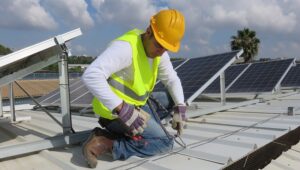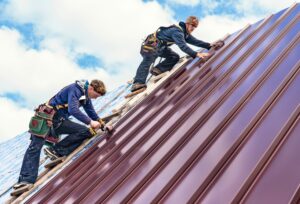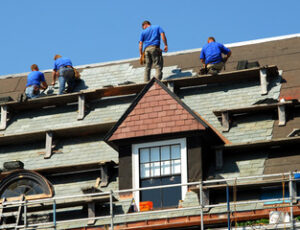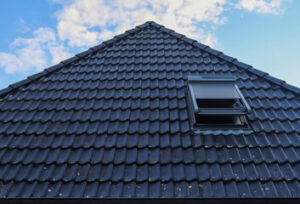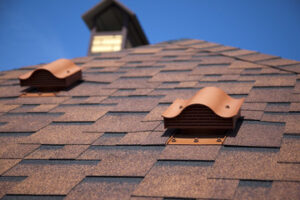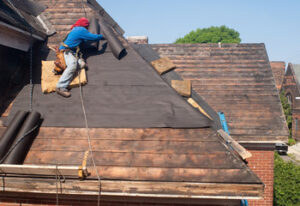West Chester Roofers work in a variety of weather conditions. They must be comfortable working in high places and carrying heavy materials.
They collaborate with construction professionals, analyzing building plans to ensure roofing is completed in accordance with design. They also determine the substrates, materials and supporting accessories used for roof installations.

Local roofers offer a variety of roofing services for homes. They can repair damaged shingles, replace them and install new ones. They also provide gutter, soffit and custom skylight installation services. They use a range of shingle brands, including eco-friendly and solar roof technologies.
They are experts in the field of all types of roofing and waterproofing systems and offer a full range of training and apprenticeship opportunities. They can also provide garden roof and green roof technology, structural waterproofing and a wide range of other services.
Members of the United Union of Roofers, Waterproofers and Allied Workers enjoy free healthcare coverage through the national plan or their own local union plan. This is an excellent perk for the members who can also benefit from high purchasing power through a low-interest credit card program and numerous discounts on consumer products.
Roofers who run their own business must handle sales and marketing. They also need to make decisions about how they will purchase and maintain their equipment, which can cost thousands of dollars. Roofers can choose to hire a freelance bookkeeper to manage the accounting needs of their business or use an online bookkeeping service. They will need to register their business and pay a variety of state and local taxes.
Self-employed roofers are required to manage marketing and sales. They must also decide how they will pay for and maintain the thousands of dollars worth of equipment that they will need to buy. Roofers have two options for handling their company’s accounting needs: they can use an online bookkeeping service or employ a freelance bookkeeper. Together with paying a number of state and local taxes, they will also need to register their business.
Many small business roofers have a crew that performs the actual roofing work. The owner may be on the job site if the project is large or complex. The company might offer in-house financing, which can be a great benefit for homeowners who cannot afford to pay for the work upfront.
Other small businesses focus on doing insurance claims for storm damage. They can do regular roof repairs, inspections for real estate companies and other services that help homeowners get their repairs done quickly. This type of roofer often offers zero-percent financing, which is a big draw for many homeowners.
A retail sales roofer sells replacement shingles and other materials to homeowners, typically using a salesperson who is the point person for each project. These companies usually have a huge selection of options and can be very competitive with pricing. However, they aren’t usually as flexible with scheduling and onsite meetings, so you’ll need to do more research before hiring one of these companies.
When choosing a name, roofers should consider what will resonate with customers in their area. Having a memorable name is important for generating leads and growing the business. Choosing a short and easy to remember name will help customers find the business when searching online.
Regardless of the size of a roofer’s operation, it is essential for them to have good liability and workers’ compensation coverage. This insurance protects the roofer from being held liable for accidents that occur on the job. It’s also required by most states for those working in the construction industry. This insurance is typically bundled with general liability and commercial property insurance to reduce premiums.
The best roofers will have multiple financing options to help their clients afford projects. Some may accept credit cards while others prefer personal loans, which require no equity in the home and typically have lower interest rates than other types of mortgage-backed finance. A person’s credit score and income are used to determine pre-qualification. Some personal loan providers allow borrowers to pay back the balance early without penalty, which can save on overall costs. Others offer fixed monthly payments to make it easier to budget.
The top roofers will provide their clients with a variety of financing options to enable them to afford projects. While some might take credit cards, others might prefer personal loans because they don’t need any equity in the house and usually have cheaper interest rates than other mortgage-backed financing options. To ascertain pre-qualification, an individual’s income and credit score are considered. Paying back the balance early without incurring penalties is an option offered by certain personal loan providers, which can result in cost savings. Some companies provide fixed monthly payments to help with budgeting.
The top roofers will provide their clients with a variety of financing options to enable them to afford projects. While some might take credit cards, others might prefer personal loans because they don’t need any equity in the house and usually have cheaper interest rates than other mortgage-backed financing options. To ascertain pre-qualification, an individual’s income and credit score are considered. Paying back the balance early without incurring penalties is an option offered by certain personal loan providers, which can result in cost savings. Some companies provide fixed monthly payments to help with budgeting.
To help their clients afford projects, the best roofers will offer a range of financing options. While some people may use credit cards, others may prefer personal loans due to the fact that they don’t require any home equity and typically have lower interest rates than other financing options backed by mortgages. Pre-qualification is determined by taking into account a person’s credit score and income. Certain personal loan providers offer the option to pay back the balance early without incurring penalties, which can save money. Certain companies offer fixed monthly installments to assist with financial planning.
Whether you have an old roof that needs replacing or are building a new home, there are plenty of local roofing contractors to choose from. The best roofers have years of experience, and they will be able to answer any questions you may have. You should also ask to see photos of their work, and make sure they have references from past customers.
The most experienced roofers have a wide range of skills, and they can handle a variety of types of roofing materials. Some even specialize in a particular type of roofing, such as flat roofs or metal roofs. They can also handle different types of roofing repairs, including sealing leaks and repairing damage.
Roofers must have good physical strength and stamina to perform their job, which can be quite physically demanding. It’s also important that they have a good sense of balance and good hand-eye coordination. Because they often work at heights, roofers must follow safety guidelines and use personal protective equipment when necessary.
In addition to installing and repairing roofs, some roofers have a more long-term career goal and wish to move into project management or estimator roles. They can learn more about these career paths through on-the-job training and industry conferences, and they can take online courses to develop the necessary skills for these positions.
Many people think of roofers as a “handyman,” but they have a much more specific skill set than other tradespeople do. They must have the ability to read blueprints and understand the structural components of buildings. They should also be able to work well with others, as they are often required to collaborate with architects and other construction workers on jobs.
Although roofers are often associated with the term “handyman,” they possess a far more specialized skill set than other tradespeople. They should be able to read blueprints and comprehend a building’s structural elements. Since they frequently collaborate on projects with architects and other construction workers, they should also be good team players.
The most experienced roofers have years of hands-on experience and know how to work with a variety of roofing materials, from traditional shingles to tile and slate. They can identify problems and repair them quickly to minimize the impact on a client’s home or business. They also have experience working at heights and must follow strict safety guidelines when using ladders and other equipment.

